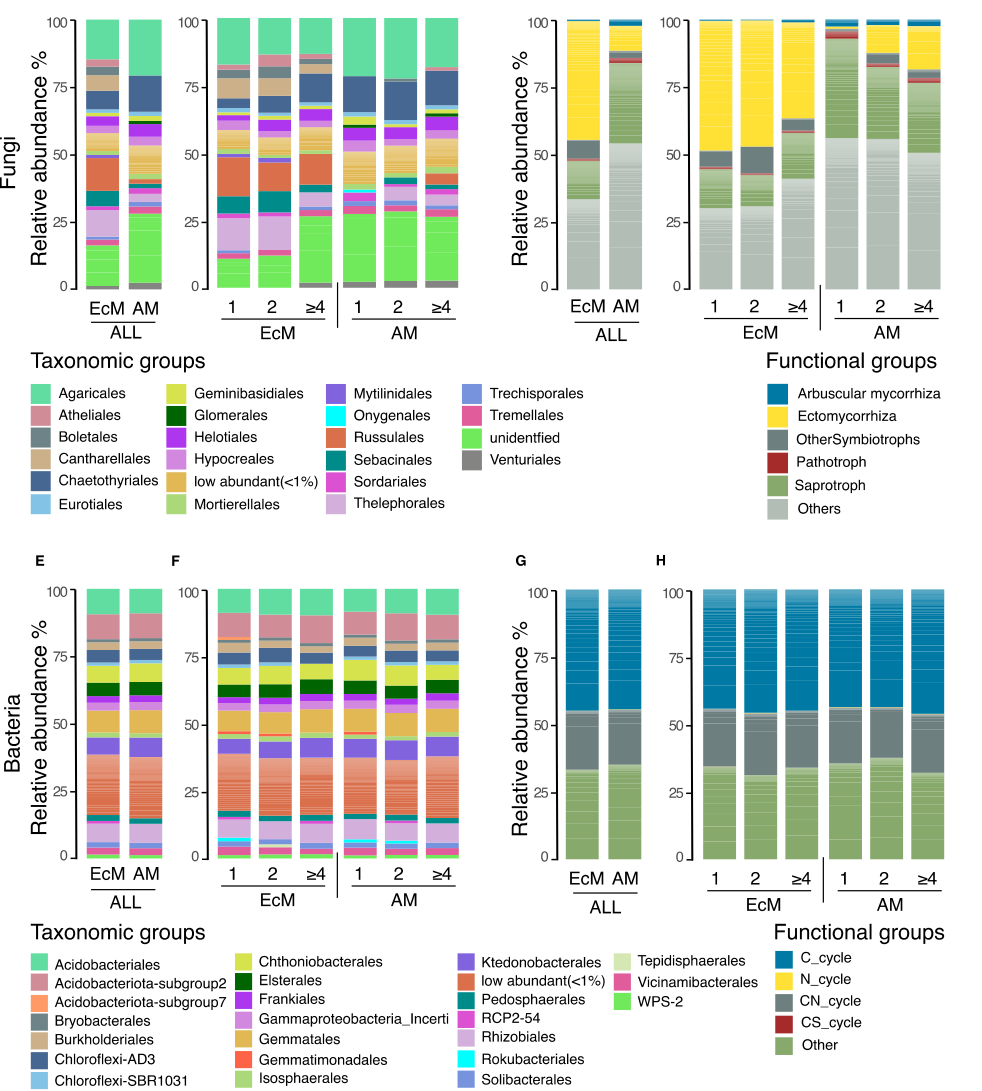There is limited knowledge on how the association of trees with different mycorrhizal types shapes soil microbial communities in the context of changing tree diversity levels. We used arbuscular (AM) and ectomycorrhizal (EcM) tree species as con- and heterospecific tree species pairs (TSPs), which were established in plots of three tree diversity levels including monocultures, two-species mixtures, and multi-tree species mixtures in a tree diversity experiment in subtropical China. We found that the tree mycorrhizal type had a significant effect on fungal but not bacterial alpha diversity. Furthermore, only EcM but not AM TSPs fungal alpha diversity increased with tree diversity, and the differences between AM and EcM TSPs disappeared in multi-species mixtures. Tree mycorrhizal type, tree diversity and their interaction had significant effects on fungal community composition. Neither fungi nor bacteria showed any significant compositional variation in TSPs located in multi-species mixtures. Accordingly, the most influential taxa driving the tree mycorrhizal differences at low tree diversity were not significant in multi-tree species mixtures. Collectively, our results indicate that tree mycorrhizal type is an important factor determining the diversity and community composition of soil microbes, and higher tree diversity levels promote convergence of the soil microbial communities. More than 90% of terrestrial plants have symbiotic associations with mycorrhizal fungi which could influence the coexisting microbiota. Systematic understanding of the individual and interactive effects of tree mycorrhizal type and tree species diversity on the soil microbiota is crucial for the mechanistic comprehension of the role of microbes in forest soil ecological processes. Our tree species pair (TSP) concept coupled with random sampling within and across the plots, allowed us the unbiased assessment of tree mycorrhizal type and tree diversity effects on the tree-tree interaction zone soil microbiota. Unlike in monocultures and two-species mixtures, we identified species-rich and converging fungal and bacterial communities in multi-tree species mixtures. Consequently, we recommend planting speciesrich mixtures of EcM and AM trees, for afforestation and reforestation regimes. Specifically, our findings highlight the significance of tree mycorrhizal type in studying ‘tree diversity – microbial diversity – ecosystem function’ relationships.
Literature:
Bala Singavarapu*, Rémy Beugnon, Helge Bruelheide, Simone Cesarz, Jianqing Du, Nico Eisenhauer, Liangdong Guo, Ali Nawaz, Yanfen Wang, Kai Xue and Tesfaye Wubet*. 2022. Tree mycorrhizal type and tree diversity shape the forest soil microbiota. Environmental Microbiology. 24(9): 4236-4255. https://doi.org/10.1111/1462-2920.15690.

